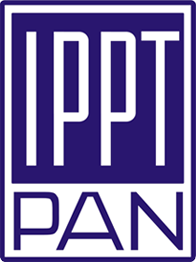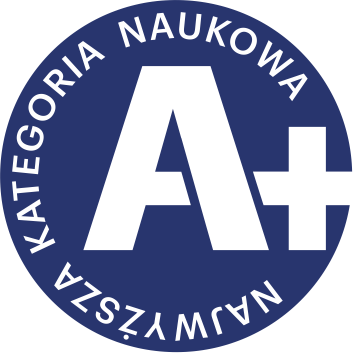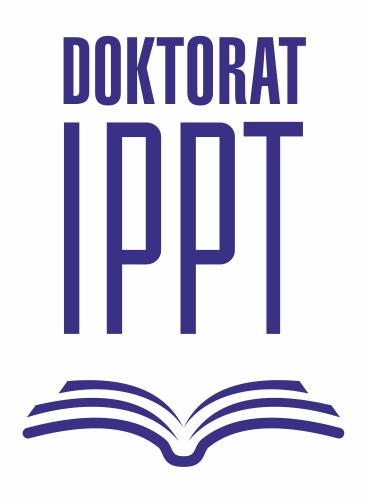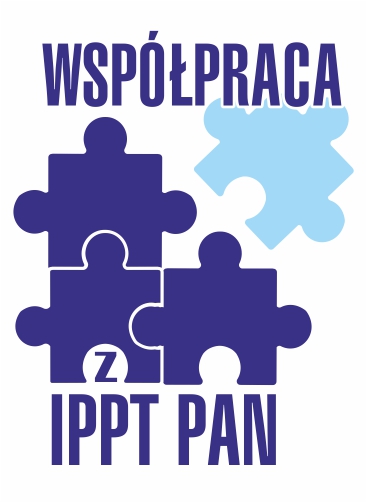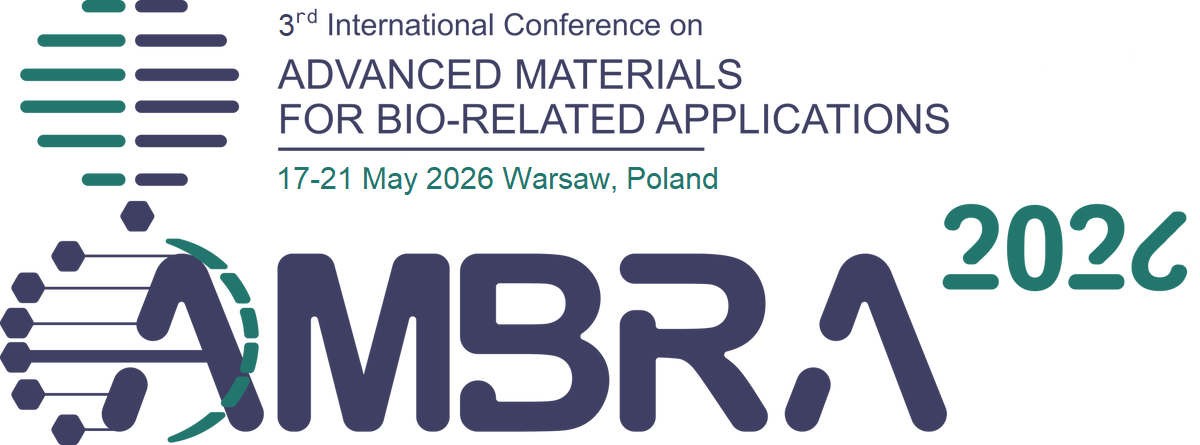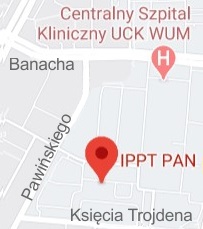| 1. |
Jeznach O., Kołbuk D., Marzec M.♦, Bernasik A.♦, Sajkiewicz P., Aminolysis as a surface functionalization method of aliphatic polyester nonwovens: impact on material properties and biological response,
RSC Advances, ISSN: 2046-2069, DOI: 10.1039/D2RA00542E, Vol.12, No.18, pp.11303-11317, 2022 Streszczenie:
It is reported in the literature that introducing amino groups on the surface improves cellular behaviour due to enhanced wettability and the presence of the positive charge. In this work, electrospun fibers were subjected to aminolysis under various conditions to investigate the impact of reaction parameters on the concentration of free NH2 groups, change of fiber properties, and the response of L929 cells. Three types of electrospun nonwovens obtained from poly(caprolactone) (PCL), poly(L-lactide-co-caprolactone) (PLCL) 70 : 30 and poly(L-lactide) (PLLA) were investigated. For all polymers, the concentration of NH2 groups increased with the diamine concentration and time of reaction. However, it was observed that PCL fibers require much stronger conditions than PLCL and PLLA fibers to reach the same level of introduced amine groups. X-ray photoelectron spectroscopy results clearly demonstrate that an aminolysis reaction is not limited to the surface of the material. Gel permeation chromatography results support this conclusion indicating global molecular weight reduction. However, it is possible to reach a compromise between the concentration of introduced amine groups and the change of mechanical properties. For most of the investigated conditions, aminolysis did not significantly change the water contact angle. Despite this, the change of L929 and MG63 cell shape to being more spread confirmed the positive effect of the presence of the amine groups. Afiliacje autorów:
| Jeznach O. | - | IPPT PAN | | Kołbuk D. | - | IPPT PAN | | Marzec M. | - | inna afiliacja | | Bernasik A. | - | inna afiliacja | | Sajkiewicz P. | - | IPPT PAN |
|  | 100p. |
| 2. |
Kaniuk Ł.♦, Ferraris S.♦, Spriano S.♦, Luxbacher T.♦, Krysiak Z.♦, Berniak K.♦, Zaszczyńska A., Marzec M.M.♦, Bernasik A.♦, Sajkiewicz P., Stachewicz U.♦, Time-dependent effects on physicochemical and surface properties of PHBV fibers and films in relation to their interactions with fibroblasts,
APPLIED SURFACE SCIENCE, ISSN: 0169-4332, DOI: 10.1016/j.apsusc.2021.148983, Vol.545, pp.148983-1-13, 2021 Streszczenie:
Biodegradability or materials physicochemical stability are the key biomaterials selection parameters for various medical and tissue engineering applications. Poly(3-hydroxybutyrate-co-3-hydroxyvalerate) (PHBV) is a natural copolymer known from its biocompatibility with great support for cells growth and attachment on films and fibers. In our studies, the physicochemical properties of electrospun PHBV fibers and spin-coated films aged for 1, 4 and 8 weeks were analyzed using bulk (FTIR) and surface chemistry (XPS) methods and water contact angle. Further, we characterized the zeta potential changes after aging, by means of electrokinetic measurements, and cell responses to it, using NIH 3T3 murine fibroblasts. Colorimetric MTS cell viability test allowed the assessment of cell proliferation. Additionally, the morphology of fibroblasts and biointerfaces were studied by confocal laser and electron scanning microscopy (CLSM and SEM). These studies indicated that the activity, attachment and proliferation of fibroblasts is independent of aging of PHBV fibers and films. PHBV films show very stable zeta potential over 8 weeks of aging, opposite to PHBV fibers. Importantly, the flat film of PHBV increases cell proliferation, while the fibrous meshes are an excellent support for their stretching. The results of the study revealed clear advantages of PHBV films and fibrous meshes in cell-material interaction. Słowa kluczowe:
cell morphology, fibroblast, electrospun fibers, PHBV, Zeta potential Afiliacje autorów:
| Kaniuk Ł. | - | inna afiliacja | | Ferraris S. | - | inna afiliacja | | Spriano S. | - | inna afiliacja | | Luxbacher T. | - | inna afiliacja | | Krysiak Z. | - | inna afiliacja | | Berniak K. | - | inna afiliacja | | Zaszczyńska A. | - | IPPT PAN | | Marzec M.M. | - | inna afiliacja | | Bernasik A. | - | inna afiliacja | | Sajkiewicz P. | - | IPPT PAN | | Stachewicz U. | - | AGH University of Science and Technology (PL) |
|  | 140p. |
| 3. |
Szewczyk P.K.♦, Gradys A., Kyun Kim S.♦, Persano L.♦, Marzec M.♦, Kryshtal A.♦, Busolo T.♦, Toncelli A.♦, Pisignano D.♦, Bernasik A.♦, Kar-Narayan S.♦, Sajkiewicz P., Stachewicz U.♦, Enhanced piezoelectricity of electrospun polyvinylidene fluoride fibers for energy harvesting,
ACS Applied Materials and Interfaces, ISSN: 1944-8244, DOI: 10.1021/acsami.0c02578, Vol.12, No.11, pp.13575-13583, 2020 Streszczenie:
Piezoelectric polymers are promising energy materials for wearable and implantable applications for replacing bulky batteries in small and flexible electronics. Therefore, many research studies are focused on understanding the behavior of polymers at a molecular level and designing new polymer-based generators using polyvinylidene fluoride (PVDF). In this work, we investigated the influence of voltage polarity and ambient relative humidity in electrospinning of PVDF for energy-harvesting applications. A multitechnique approach combining microscopy and spectroscopy was used to study the content of the β-phase and piezoelectric properties of PVDF fibers. We shed new light on β-phase crystallization in electrospun PVDF and showed the enhanced piezoelectric response of the PVDF fiber-based generator produced with the negative voltage polarity at a relative humidity of 60%. Above all, we proved that not only crystallinity but also surface chemistry is crucial for improving piezoelectric performance in PVDF fibers. Controlling relative humidity and voltage polarity increased the d33 piezoelectric coefficient for PVDF fibers by more than three times and allowed us to generate a power density of 0.6 μW·cm^–2 from PVDF membranes. This study showed that the electrospinning technique can be used as a single-step process for obtaining a vast spectrum of PVDF fibers exhibiting different physicochemical properties with β-phase crystallinity reaching up to 74%. The humidity and voltage polarity are critical factors in respect of chemistry of the material on piezoelectricity of PVDF fibers, which establishes a novel route to engineer materials for energy-harvesting and sensing applications. Słowa kluczowe:
PVDF, polymer crystallinity, electrospinning, piezoelectricity, voltage polarity Afiliacje autorów:
| Szewczyk P.K. | - | inna afiliacja | | Gradys A. | - | IPPT PAN | | Kyun Kim S. | - | inna afiliacja | | Persano L. | - | inna afiliacja | | Marzec M. | - | inna afiliacja | | Kryshtal A. | - | inna afiliacja | | Busolo T. | - | inna afiliacja | | Toncelli A. | - | inna afiliacja | | Pisignano D. | - | inna afiliacja | | Bernasik A. | - | inna afiliacja | | Kar-Narayan S. | - | inna afiliacja | | Sajkiewicz P. | - | IPPT PAN | | Stachewicz U. | - | AGH University of Science and Technology (PL) |
|  | 200p. |



